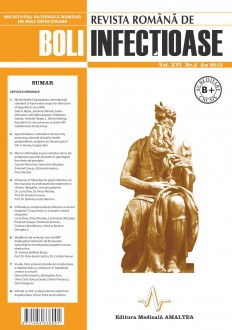SELECT ISSUE

Indexed

| |

|
|
|
| |
|
|
|

|
|
|
|
|
|
| |
|
|
HIGHLIGHTS
National Awards “Science and Research”
NEW! RJID has announced the annually National Award for "Science and Research" for the best scientific articles published throughout the year in the official journal.
Read the Recommendations for the Conduct, Reporting, Editing, and Publication of Scholarly work in Medical Journals.
The published medical research literature is a global public good. Medical journal editors have a social responsibility to promote global health by publishing, whenever possible, research that furthers health worldwide.
SPECIAL FEATURE: A DECADE IN BIOSECURITY ASSESSING A DECADE OF PUBLIC HEALTH PREPAREDNESS: PROGRESS ON THE PRECIPICE?
Elin A. Gursky and Gregory Bice
ABSTRACT
September 11 and the subsequent anthrax attacks marked the beginning of significant investment by the federal government to develop a national public health emergency response capability. Recognizing the importance of the public health sector’s contribution to the burgeoning homeland security enterprise, this investment was intended to convey a ‘‘dual benefit’’ by strengthening the overall public health infrastructure while building preparedness capabilities. In many instances, federal funds were used successfully for preparedness activities. For example, electronic health information networks, a Strategic National Stockpile, and increased interagency cooperation have all contributed to creating a more robust and prepared enterprise. Additionally, the knowledge of rarely seen or forgotten pathogens has been regenerated through newly established public health learning consortia, which, too, have strengthened relationships between the practice and academic communities. Balancing traditional public health roles with new preparedness responsibilities heightened public health’s visibility, but it also presented significant complexities, including expanded lines of reporting and unremitting inflows of new guidance documents. Currently, a rapidly diminishing public health infrastructure at the state and local levels as a result of federal budget cuts and a poor economy serve as significant barriers to sustaining these nascent federal public health preparedness efforts. Sustaining these improvements will require enhanced coordination, collaboration, and planning across the homeland security enterprise; an infusion of innovation and leadership; and sustained transformative investment for governmental public health.
